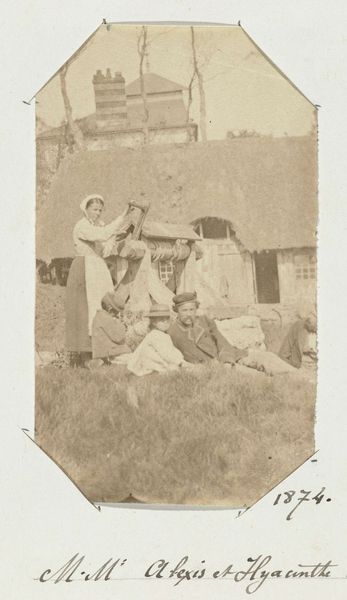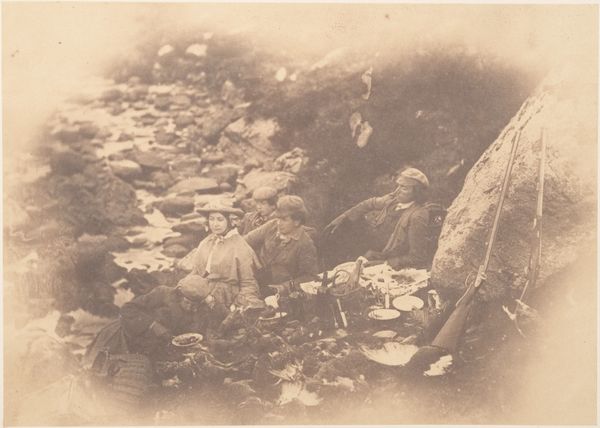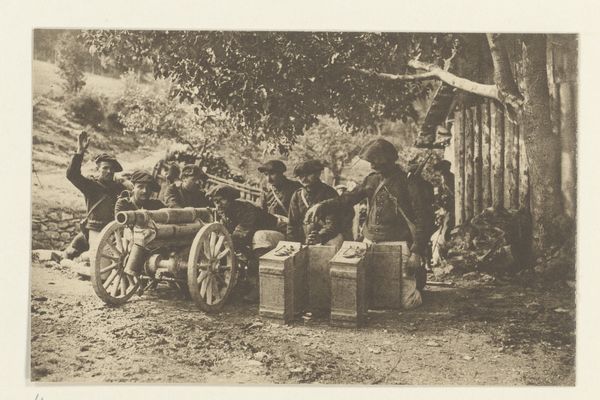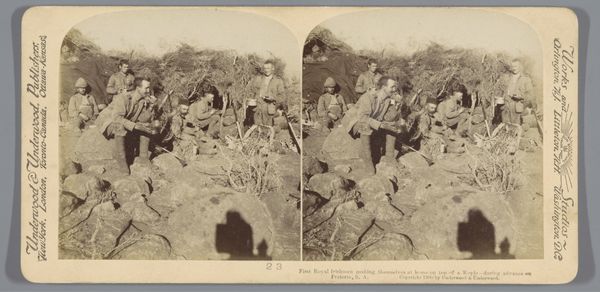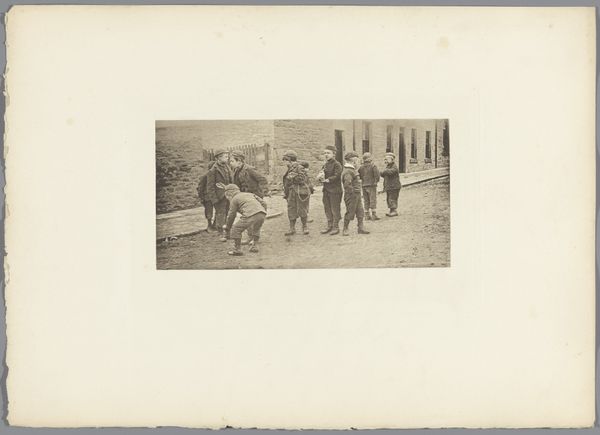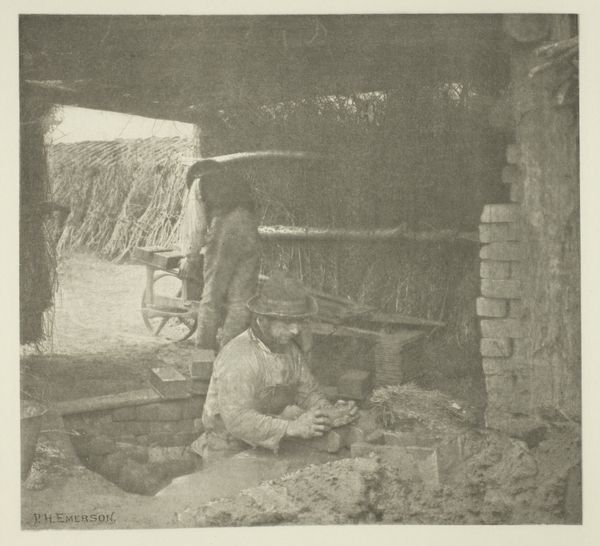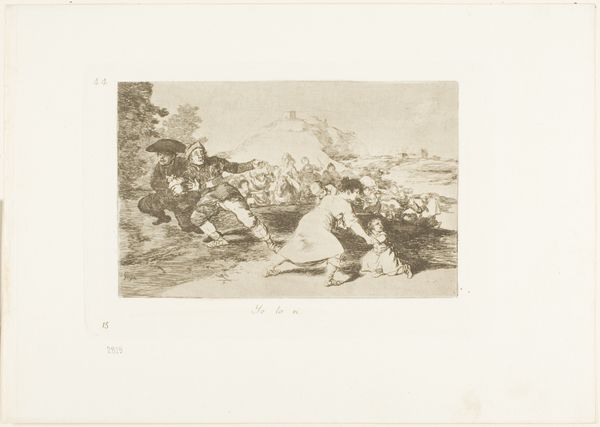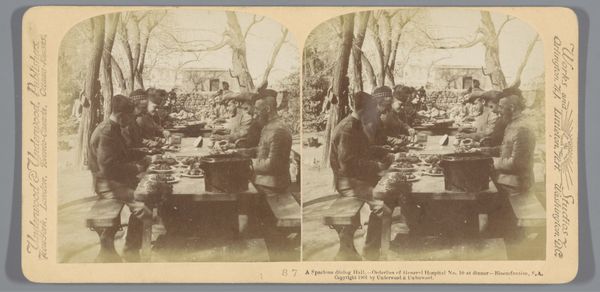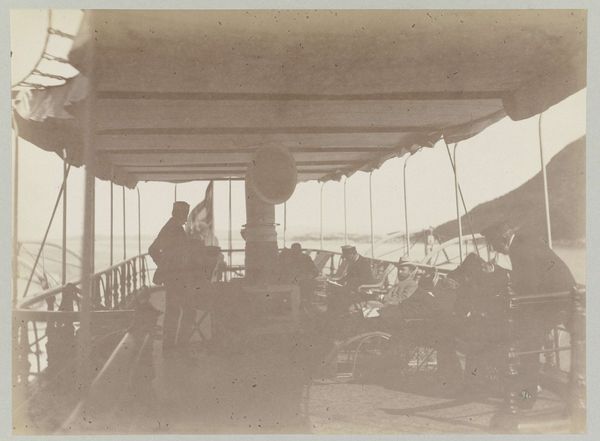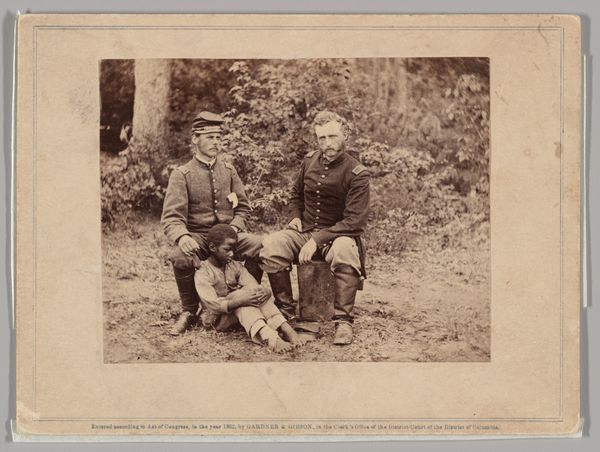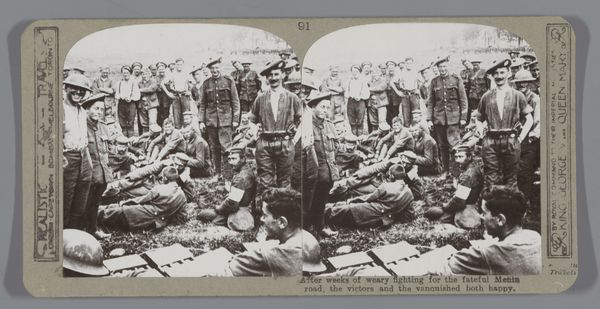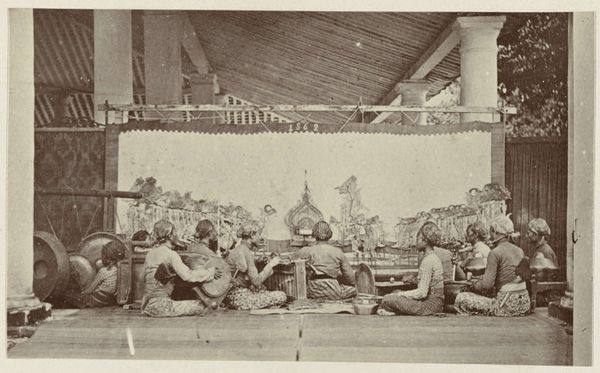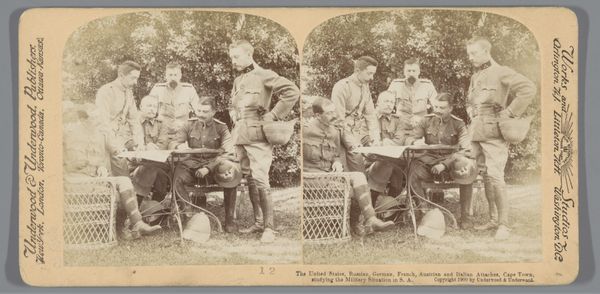
#
light pencil work
#
wedding photograph
#
photo restoration
#
wedding photography
#
pencil sketch
#
boy
#
charcoal drawing
#
charcoal art
#
pencil drawing
#
coffee painting
#
watercolor
Copyright: Public Domain
Curator: Hill and Adamson’s photograph, "Newhaven Boys," taken between 1843 and 1847, presents a poignant slice of life from the Scottish fishing community. The photograph captures a group of young boys, some perched on barrels, others lounging on the ground, their faces a mix of weariness and youthful curiosity. Editor: It feels almost staged, even for an early photograph. I’m struck by how the light plays on their faces and clothes—it's beautifully rendered, despite the inherent limitations of the period's photographic technology. What was the process here? Curator: The calotype process—a relatively new photographic method at the time. Its appeal lay in producing paper negatives, from which multiple prints could be made. The choice of this technology really opened new avenues for the democratization of image production. These images, these boys, have a legacy because of it. Editor: I'm especially intrigued by the roughness in their clothing; it tells us so much about their labor, their daily life. The choice of capturing these boys is an acknowledgement of a particular kind of labor and of childhood experience. Curator: Absolutely. I mean, we’re talking about boys on the periphery of power here, working class boys who never show up in paintings. Photography offered them a space in visual culture that would’ve otherwise been impossible. I also consider their potential agency and resistance to systems of control at play during this historical moment. How are they subverting, existing? Editor: Subversion is present simply in its existence as you stated! And in some ways this photograph disrupts the established hierarchy of the art world. You’ve got working-class boys portrayed with a care typically reserved for the elite. The very materiality of the image serves to memorialize the boys and their social class within their specific historical moment. Curator: The legacy is multilayered. The technology democratized image production but the image itself made these boys of Newhaven visible subjects in Scotland, Europe, and today in America, as part of the Metropolitan Museum of Art's collection in New York. It makes us ask how labor continues to be captured by a lens, both visually and ideologically. Editor: Indeed. Considering both the materials of the photograph and the representation it depicts forces us to confront the complexities of art's role in shaping our understanding of labor, class, and historical identity.
Comments
No comments
Be the first to comment and join the conversation on the ultimate creative platform.
